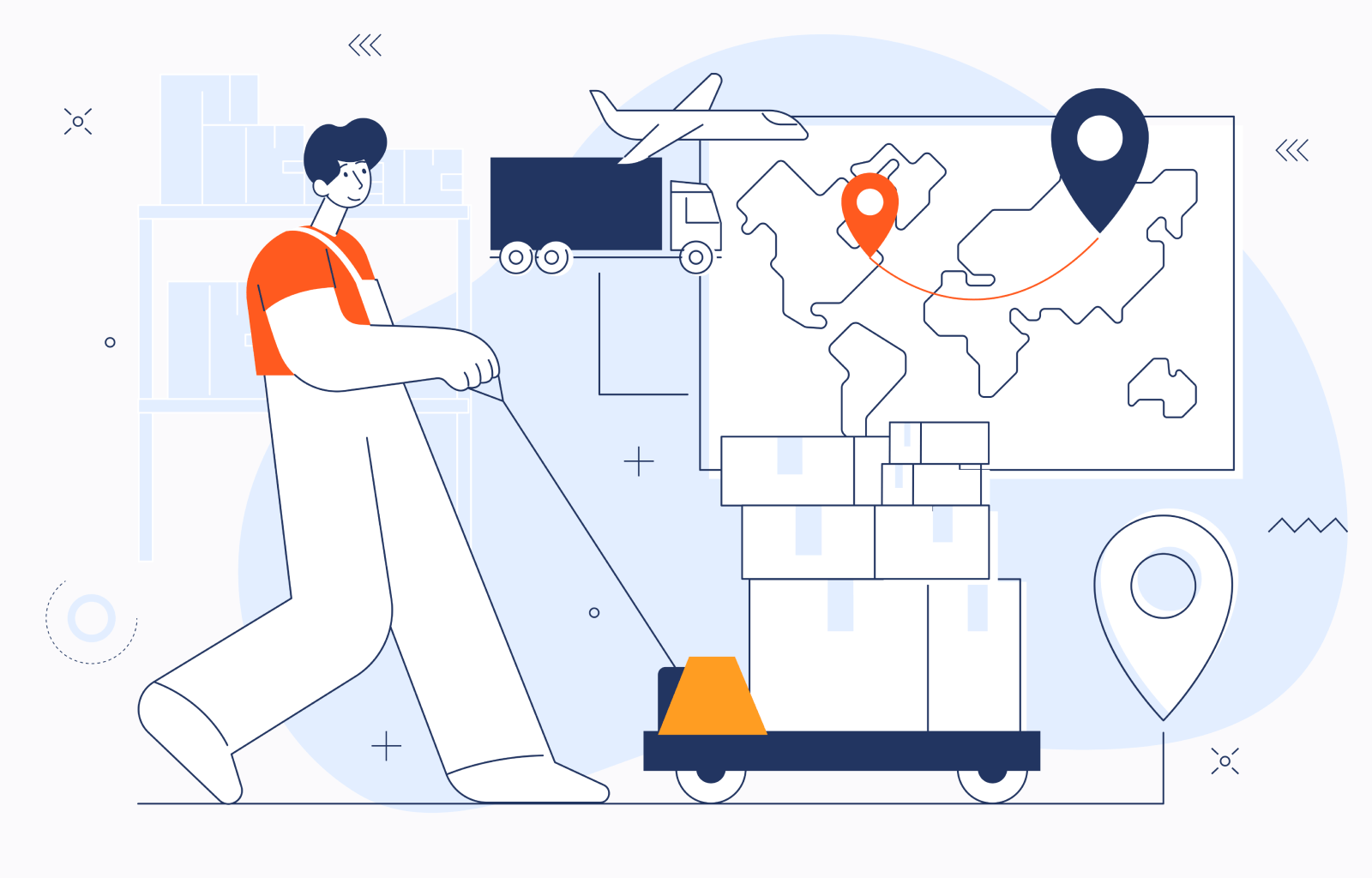Cargo Demand Forecasting for Perishable Goods: Balancing Speed, Spoilage Risk, and Margins

Perishable goods logistics is a high-stakes process: you’re dealing with ruthless deadlines, where every hour counts. From fresh produce to pharmaceuticals, all these perishables share one thing in common. They have a short shelf life and stringent quality standards. If you get your delivery timings wrong or miscalculate product quantities, you risk losing revenue and wasting cargo.
This is where cargo demand forecasting becomes necessary. But it isn’t easy. You should constantly balance urgency, perishability, and margins. The stakes are only growing, with the perishable goods transportation market expected to rise from almost $6 billion in 2025 to $12 billion by 2034.
Luckily, there’s a way to make demand forecasting smoother, particularly with AI, ML, and predictive analytics. In this post, we discuss those advancements and demand planning in detail.
Why Perishable Cargo Is Different
If you’re moving durable goods, time is money. If you’re moving perishable goods, time is product viability. Here’s what makes perishable goods logistics different:
- High spoilage risk. Compared to general cargo, perishables deteriorate rapidly. It’s especially so if conditions aren’t carefully maintained or delays take place.
- Narrow delivery windows. The short shelf life of perishable products means they have to be delivered as quickly as possible. This usually requires a precise, just-in-time logistics approach.
- Need for temperature-controlled logistics. The cold chain infrastructure determines the integrity of most perishables. Specialized containers, refrigerated trucks, and monitoring systems that maintain a specific temperature range (such as 2°C to 8°C for pharmaceuticals) are examples of this.
- Regulatory and compliance challenges. The transportation of perishables, especially across borders, requires complying with lots of health, safety, and customs regulations. These range from certifications for food safety to instructions for handling medications.
Common Challenges in Forecasting Demand for Perishables
Perishable supply chain forecasting is genuinely complex. And it’s not just because perishable goods spoil quickly. It’s because various external factors influence the forecasts. Here are the main ones:
- Unpredictable consumer demand. Consumer behavior for fresh and perishable products is often affected by instant, hard-to-track factors. A sudden health trend on social media, a viral recipe, a new “superfood”, or a competitor’s price drop can make accurate forecasting tricky.
- Seasonal and climate-driven variability. Fresh products largely depend on nature’s schedule. Harvest cycles, fishing yields, and weather changes all affect perishables availability and your forecast’s accuracy.
- Lack of real-time visibility into supply and demand. Different supply chain participants often rely on different versions of the truth. This lack of real-time visibility means forecasting data is either out-of-date or incomplete.
- Capacity mismatches and wasted space. If you base your transportation and warehousing decisions on inaccurate forecasts, you may end up with either underutilized trucks and containers or unmet orders.
- Overforecasting vs. underforecasting. Overforecasting results in excess inventory that spoils before it can be sold. Underforecasting means stockouts, missed revenue, and disappointed customers.
How Forecasting Improves Perishable Cargo Operations
While it has its unique challenges, cargo demand forecasting for perishables is extremely helpful. Here’s how it creates a positive impact:
- Improved allocation of cargo space. When handled properly, perishable supply chain forecasting helps you match capacity with actual demand. Once predictions are made, you can confidently choose more economical ocean freight for typical volumes and reserve expensive air freight only for sudden surges or highly sensitive goods.
- Better scheduling of cold chain assets. With cold chain demand forecasting, you use refrigerated trucks, cold storage facilities, and other temperature-controlled infrastructure more effectively.
- Early identification of demand surges and drops. Forecasting mechanisms consider many variables to identify demand shifts that otherwise would go unnoticed by the human eye. With this information, you can either reserve transport capacity for a surge or launch discounts and promotions for an anticipated drop.
- Dynamic pricing for perishables. You can achieve dynamic pricing by combining demand forecasting with inventory and shelf-life data. Prices for new, in-demand products remain the same, while prices for products nearing expiration automatically decrease.
Role of AI and Predictive Analytics in Perishable Forecasting
Keeping speed, perishability, and margins under control may be too complex for traditional forecasting methods. That’s where artificial intelligence and predictive analytics for perishables are typically used. Let’s look at how they help:
Smarter Demand Detection
You can use AI models to analyze multiple variables at once:
- External factors. Such as weather forecasts, social media trends, competitor pricing, and macroeconomic indicators that can influence short-term demand for perishables.
- Historical data. Helps uncover demand nuances and long-term consumption patterns you may not have noticed otherwise.
- Inventory status. Includes available stock levels and remaining shelf life, both critical for aligning production and delivery schedules.
With this information analyzed, you can prepare for demand changes in advance.
Real-Time Adjustments During Transit
Using smart, AI-powered systems lets you track your cargo in motion. This enables:
- Dynamic rerouting. If demand in the planned destination suddenly drops or if there’s a significant delay, the system can suggest rerouting your cargo to an alternative market.
- Cargo reallocation. If one destination’s demand has dipped and another’s has jumped, the system ensures more goods go to the second destination upon arrival.
Case in Action
Take a look at the leading retailers handling perishable cargo optimization with these technologies. For example, in July 2024, Walmart embraced AI and automation to upgrade, expand, and build new infrastructure across its supply chain — a move largely influenced by climate-induced disruptions and geopolitical tensions.
Practical Steps for Cargo Companies
What can you do to make perishable supply chain forecasting more accurate and efficient? Start with the following steps:
Integrate demand forecasting into ERP and cargo management systems.Simple demand forecasts can be transformed into concrete scheduling, routing, and inventory decisions by integrating these systems. Additionally, you can eliminate manual data entry across all your platforms.
Use IoT sensors for real-time condition data.Equip trucks, containers, and cold storage facilities with IoT sensors to gain complete visibility into your cargo. Track location, temperature, and humidity in real time to prevent spoilage and ensure compliance.
Collaborate with shippers and exporters for shared data.Forecasting quality is only as good as its input data. Establish reliable data-sharing frameworks with producers and distributors to access broader insights and improve forecasting accuracy.
Invest in scenario planning.Strengthen your supply chain resilience with scenario modeling — best, worst, and expected cases. Running these simulations helps you prepare for extreme variations and minimize operational risks.
Conclusion
Cargo demand forecasting is a must for perishable goods. It helps you better allocate cargo space, anticipate demand spikes and declines, and ultimately protect your margins. And it gets even more potent when combined with AI, real-time data, and predictive analytics.
In case you want to make your perishable goods logistics smarter and more profitable, reach out to Integrio Systems. With our web development and AI expertise, we can make that happen.
FAQ
The complexity stems from the very nature of perishable goods: they have short shelf lives. This means that even one forecasting mistake can lead to total product loss. On top of that, perishables are subject to strict regulations that further complicate logistics and planning.
AI makes demand forecasting smarter by analyzing multiple factors simultaneously — weather patterns, historical sales data, market trends, and more. This multidimensional analysis enables more accurate forecasts, reducing spoilage and waste.
Absolutely. Cargo demand forecasting tools help align supply with real demand. By avoiding both overstocking and stockouts — the two biggest sources of financial loss — businesses can significantly improve their profit margins.
Cold chain infrastructure provides the operational data that forecasting systems rely on. If this data is inaccurate, incomplete, or outdated, forecasting results become unreliable. High-quality temperature, location, and condition data are essential for dependable predictions.
There are four key steps to begin integrating perishable supply chain forecasting: combine forecasting tools with existing ERP and cargo management systems, install IoT sensors for real-time visibility, collaborate closely with shippers and exporters for shared data, and invest in scenario planning to prepare for both best and worst cases.
Contact us

